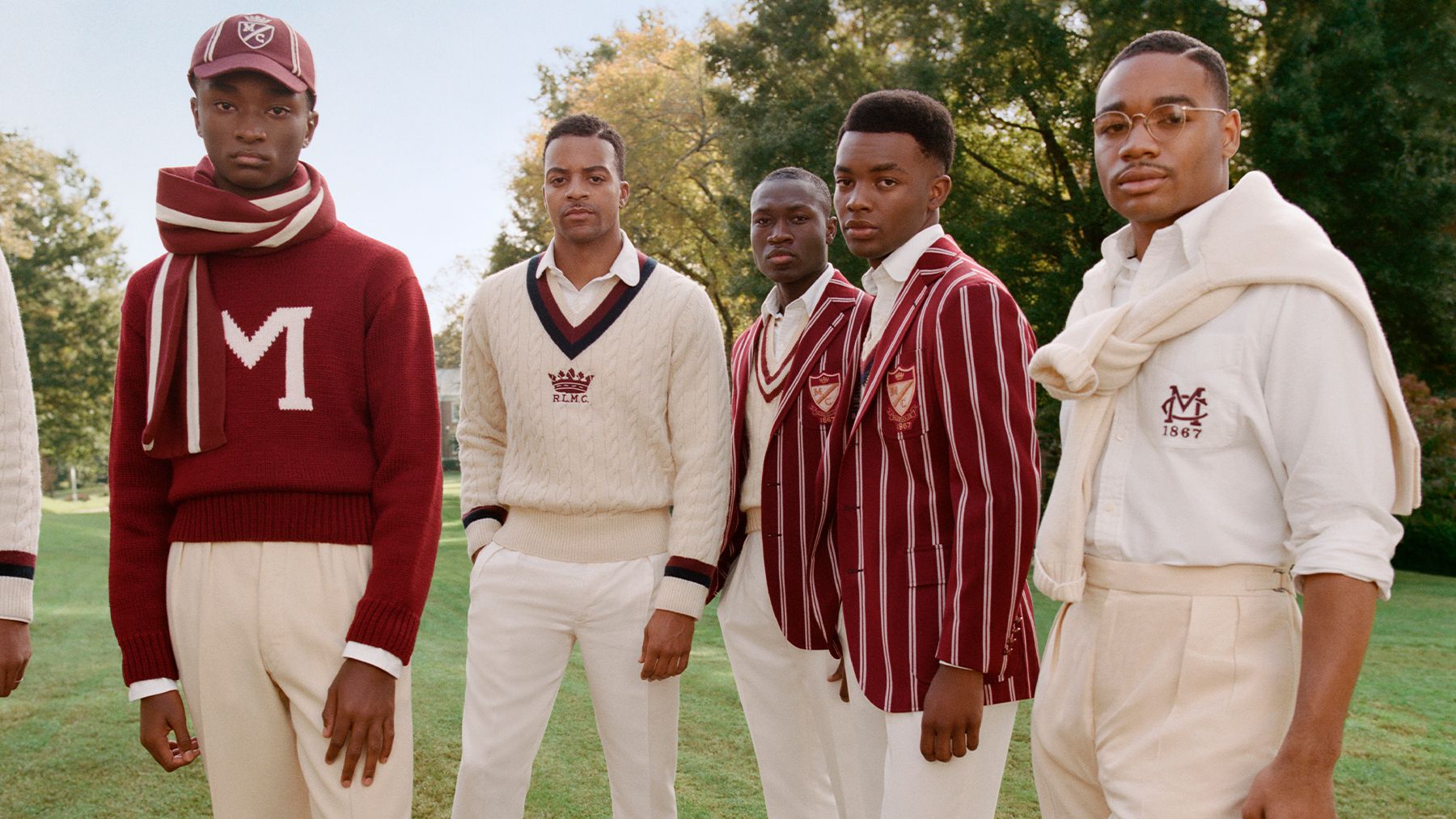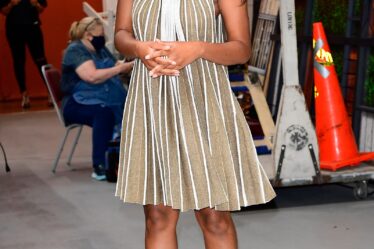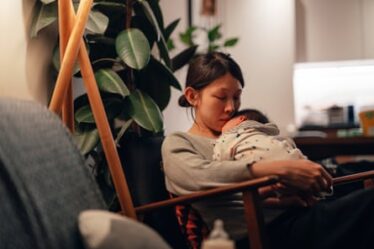
When Ralph Lauren unveiled its first-of-its-kind collaboration with historically Black colleges Morehouse and Spelman, the brand seemed to follow the post-George Floyd playbook for diversity best practices to the letter. Conceived and executed by Black employees and HBCU alumni in coordination with the schools and their students, the collection was intended to bring into the fold some of the people the brand had overlooked in its decades defining American style.
The initial wave of reviews from fashion critics, diversity thought leaders and Black writers was overwhelmingly positive. GQ’s Cole Brown declared the collection “a win,” while Harvard University professor Sarah Lewis — a consultant on the project — called it “historic and stunning in every way.” Robin Givhan, The Washington Post’s Pulitzer Prize-winning fashion editor, dubbed the clothing “an enduring declaration of belonging.”
But the collection drew plenty of sceptics too, and their voices grew louder as Ralph Lauren’s promotional campaign kicked into high gear.
Fashion and costume historian Shelby Ivey Christie dubbed the clothes “waspy” and, worse, reminiscent of the Jim Crow segregation era. Others took to Instagram and Twitter to call out the decision to work with two of the most-prominent HBCUs, suggesting they were low-hanging fruit for mainstream fashion brands looking to pad their DEI bona fides. Some questioned whether a big brand like Ralph Lauren, owned and operated mostly by white people, could ever showcase Black culture without engaging in appropriation.
Ralph Lauren has not said anything publicly about the collection since the initial announcement. On Monday the brand released a film, ”A Portrait of the American Dream.” The documentary details “the founding and historical significance of HBCUs … demonstrating the use of style as an expression of aspiration, a form of self-empowerment and a tool of resistance,” the company said. The company declined BoF’s requests for comment.
All told, the campaign was one of the most ambitious attempts yet by a mainstream brand to tackle the issues raised in the summer of 2020. Executives at rival brands and retailers are watching the reaction closely. Many of these companies have made it clear they intend to create more Black-focused marketing campaigns and collections, both to rectify historical racial inequities and court previously overlooked Black consumers.
The fate of Ralph Lauren’s effort is therefore likely to influence future Black-focused marketing and collections. Its success or failure won’t be determined by weighing positive and negative comments on Twitter. But brands do need to anticipate the inevitable debate when they mount a Black-focused campaign.
DEI experts say the companies best positioned to move the industry forward on matters of equity and inclusion must be willing to accept — and even embrace — their critics. A campaign that provokes no conversation at all could be a sign a brand has set its ambitions too low.
“If there is any fashion house or corporate fashion identity that’s looking at Ralph Lauren’s situation and saying maybe I ought to not touch [race issues], then you ought to not touch it,” said Crystal deGregory, a historian and research fellow at Middle Tennessee State University’s Center for Historic Preservation, whose work has focused on HBCUs. “Because that says to me that you are not well suited to even attempt to do this well.”
What Are You Aiming For?
Companies from Zara and H&M to Prada and Burberry have gotten into hot water for products and imagery that conjured up racist ideologies or borrowed from minority communities without acknowledgement or compensation. Ralph Lauren had its own moment in 2020 when the brand was called out for using the Greek letters associated with the Black fraternity Phi Beta Sigma on a pair of trousers.
The debate over Ralph Lauren’s HBCU collection was different. Brands must draw clear distinctions between missteps caused by ignorance and the debate sparked by well-developed campaigns informed by research and representation, said Suki Sandhu, founder and chief executive of INvolve, a consultancy and global network championing diversity and inclusion in businesses.
The former is a true public relations crises that require a different set of problem-solving. The latter is what brands should be aiming for when they engage with consumers on race.
“When I’m giving advice to a brand, I’m often saying ‘as a Black woman consumer, I think this is something that you should do, but as the professional that you have hired to consult you, I have to let you know what you’re getting into,’” said Cora Harrington, a brand consultant and editor-in-chief of The Lingerie Addict, which emphasises diversity in the intimate apparel sector.
Harrington started a Twitter thread on March 15, in response to those who criticised Ralph Lauren’s HBCU line as reminiscent of the Jim Crow era, arguing that Black people should be able to wear vintage clothing “without it automatically being seen as a part of Jim Crow and segregation.” That message was retweeted nearly 400 times.
The first step for most companies is to be clear on what they want to accomplish. Limited edition collections such as the one released by Ralph Lauren are not often expected to become huge revenue drivers — at least not directly. Instead, they’re often meant to drum up brand heat — and curry favour among new consumers — which if executed correctly, could create significant long-term value in the form of brand cache and customer loyalty.
The best projects will have at their core a focus on representation, education and understanding, innovation and engagement of new communities, Sandhu said.
“These collaborations should bring diversity of thought to the company but also make sure that diverse audiences that have routinely been underserved are actually now being brought to the fore and given the attention that they need,” Sandhu said.
What’s Your DNA?
Brands that haven’t historically engaged in conversations about race or have never dedicated marketing dollars toward engaging with the Black community should consider whether now is the time to be launching a Black-focused campaign in the first place.
“If you don’t have Black employees, you can sit these conversations out,” said Veronica Miller Jamison, a Howard University graduate, illustrator and print designer for an American heritage brand. “If you don’t even have Black people in your building making decisions, then you have a lot more work to do before you start trying to reach out.”
Even companies with Black employees on their payroll have to be careful about the expectations they put on small groups of underrepresented employees to speak on behalf of the entire Black population. What’s more, companies looking for resounding applause from all members of the Black community every time they acknowledge racial injustice are already making a critical mistake.
A stamp of approval from a leading advocacy group or institution won’t inoculate a brand from criticism either. Morehouse and Spelman might approve of Ralph Lauren’s collection, but “that doesn’t speak for the 100-plus other HBCUs and certainly not for all Black people — nothing ever does that,” deGregory said.
One way companies can ensure they’re taking a holistic view of underrepresented groups is to hire more minorities but also diversify the schools and communities from which they recruit Black talent, said Jourdan Ash, founder of True to Us, an online media platform focused on Black and Brown women in streetwear.
“In the [Ralph Lauren imagery] people were also asking ‘Where are queer folks who go to Spelman or the trans folks who go to Morehouse?’” she said. “Because diversity doesn’t stop at ‘I have one black man who is straight and I have one straight Black woman.’ You have to be diverse all around.”
Fashion collections that draw on racial themes can have positive and negative ripple effects on brand perception, revenues and even shareholder value. But the impacts can also trickle down to employees at all levels — minorities in particular — in sometimes unexpected ways.
For instance, it’s widely considered a DEI best practice for brands looking to make meaningful inroads with the Black community to engage their Black employees. But there’s a crucial difference between empowering minority employees to take charge of certain projects and putting the onus on them to guarantee outcomes.
In other words, non-minority executives should share the burden in both executing campaigns focused on underrepresented communities as well as in taking the lead in expanding those efforts beyond one-off activations, Ash said.
That also means meaningful conversations and debates should not be viewed as liabilities.
“This is a courageous conversation, because as much as [these campaigns] are about what is on the rack and on the shelf, they’re also about all of the legwork and all of the conversations that happen,” deGregory said. “Companies are not going to overturn their tables, but at least they can position Black people … to have a seat at that table. For that, I think that so far, it’s been so good for Ralph Lauren.”



